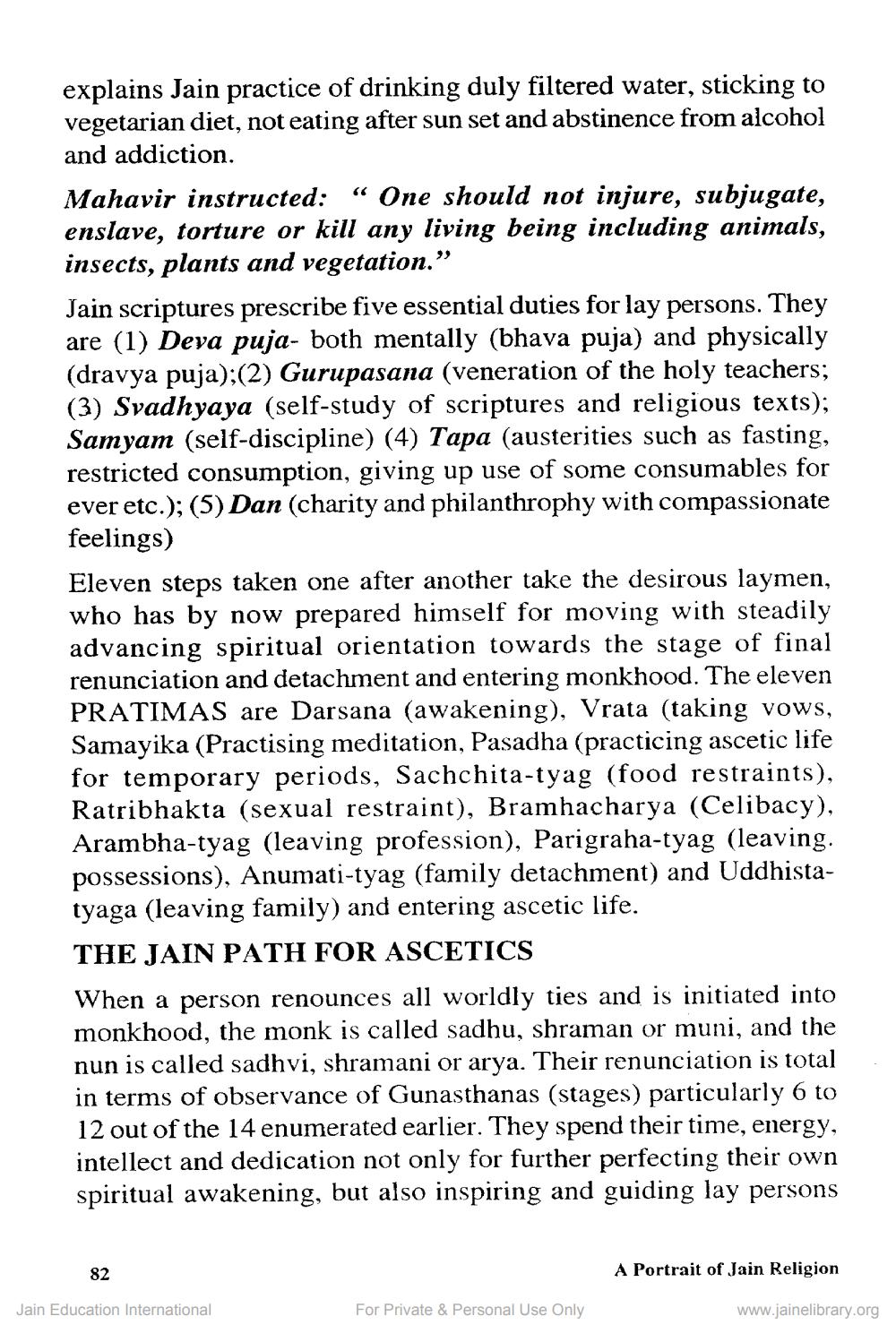________________
explains Jain practice of drinking duly filtered water, sticking to vegetarian diet, not eating after sun set and abstinence from alcohol and addiction. Mahavir instructed: “ One should not injure, subjugate, enslave, torture or kill any living being including animals, insects, plants and vegetation.' Jain scriptures prescribe five essential duties for lay persons. They are (1) Deva puja- both mentally (bhava puja) and physically (dravya puja);(2) Gurupasana (veneration of the holy teachers; (3) Svadhyaya (self-study of scriptures and religious texts); Samyam (self-discipline) (4) Tapa (austerities such as fasting, restricted consumption, giving up use of some consumables for ever etc.); (5) Dan (charity and philanthrophy with compassionate feelings) Eleven steps taken one after another take the desirous laymen, who has by now prepared himself for moving with steadily advancing spiritual orientation towards the stage of final renunciation and detachment and entering monkhood. The eleven PRATIMAS are Darsana (awakening), Vrata (taking vows, Samayika (Practising meditation, Pasadha (practicing ascetic life for temporary periods, Sachchita-tyag (food restraints), Ratribhakta (sexual restraint), Bramhacharya (Celibacy), Arambha-tyag (leaving profession), Parigraha-tyag (leaving. possessions), Anumati-tyag (family detachment) and Uddhistatyaga (leaving family) and entering ascetic life. THE JAIN PATH FOR ASCETICS When a person renounces all worldly ties and is initiated into monkhood, the monk is called sadhu, shraman or muni, and the nun is called sadhvi, shramani or arya. Their renunciation is total in terms of observance of Gunasthanas (stages) particularly 6 to 12 out of the 14 enumerated earlier. They spend their time, energy, intellect and dedication not only for further perfecting their own spiritual awakening, but also inspiring and guiding lay persons
82
A Portrait of Jain Religion
Jain Education International
For Private & Personal Use Only
www.jainelibrary.org




